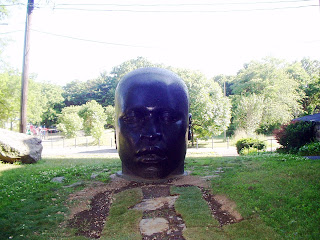Memorial honors 'Spirit' of African American soldiers

D uring the Civil War, American citizens fought against each other in an attempt to uphold the respective ideologies in which they believed. The South sought to maintain the institution of slavery, and the North desired to preserve the Union. African American soldiers’ participation in the war aided the Union’s victory. The sacrifices of the African American soldiers who served in the Civil War are memorialized at the African American Civil War Memorial, located at 1000 U Street in Washington, D.C. Built in 1998, the memorial includes the “Spirit of Freedom” statue surrounded on three sides by The Wall of Honor. Sculptor Ed Hamilton, of Louisville, Kentucky designed the 9 ½ foot statue, which depicts three African American soldiers and an African American sailor who symbolize protectors of the fight for freedom. The soldiers and sailor are accompanied by a spirit, at the top of the statue, who is symbolically guiding them into battle. The back of the memorial depicts a family with thei

